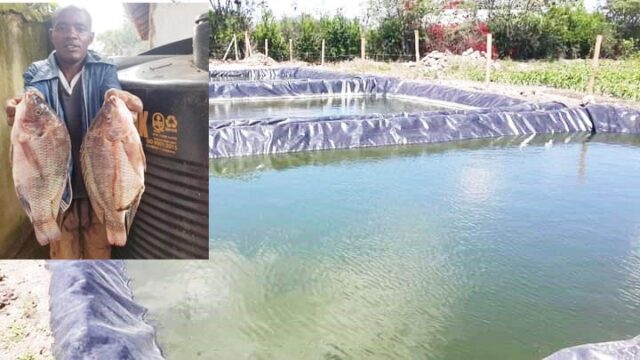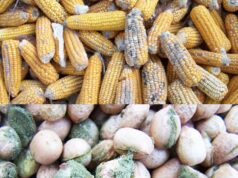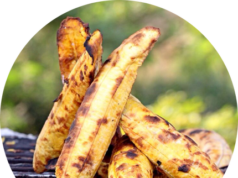By Joseph Kiyimba
One of the most lucrative farming ventures in Uganda is fish farming, also known as aquaculture. However, there is still a big gap in production, partly because some people assume that the fish produced from natural water bodies is enough for the market.
Pond construction
John Baptist Agaba, a fish farmer in Entebbe along Kasanyi road, explains: “Ponds are constructed using a pond liner (a hard kind of kavera).
“The thickness of a good pond liner is one millimeter which lasts for over 5 years.”
He adds that a good one for a 2×4 meters pond is currently estimated to cost Shs 850,000, while the one of 4×4 meters costs about Shs1, 600,000.
Ponds are supported with timber, though some farmers prefer to use bricks, stones or soil. However, constructing with bricks is more costly in terms of money and energy.
The colour of the pond liner also matters. Some farmers use white, but black ones are the best.
“Materials that are black in color normally help in absorbing as much heat as possible. Remember, fish need an environment that is about 25 to 30 degrees Celcius. This is why fish farming should be preferably done in a green house,” Agaba says.
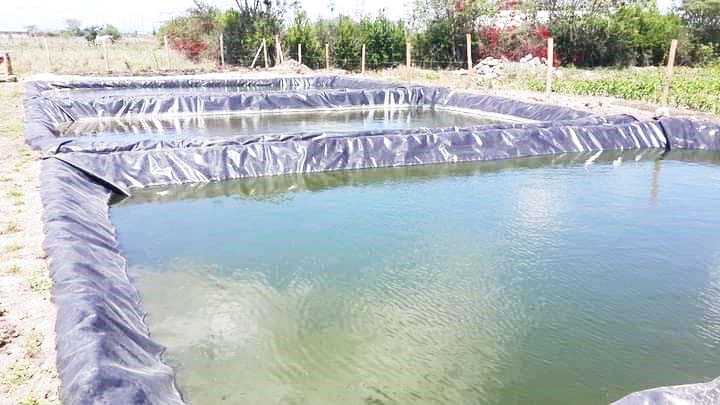
Taking care of the pond
Agaba says water in an open fish pond should be replaced every two weeks.
As you replace the water, you should not remove all the water at a go because the fish might die. You need to replace only 10 per cent of the water on each replacement.
This means you should be aware of how much water is in your fish pond.
He says: “Normally, in each pond of 2×4 meters, there are always about 4,000 litres of water.
“You should always ensure the water is not more than 85 centimetres to avoid flooding and the fish falling out of the pond.”
As a fish farmer, one should be aware that fish sometimes eat each other and it has caused huge losses to many fish farmers who are not aware of how to control this dangerous habit.
“One practice that has worked for us in this regard is grading the fish. For instance when you bring your 1,000 young fish, you first put all of them in one pond,” Agaba adds.
He also says as they grow, he grades them according to size, separating bigger ones and putting them in the second pond until he has 500 in one pond and 500 in another. He constructs fish ponds in pairs for this same reason.
Also, introduce algae in the pond. It is called fertilizing the pond. If you have a fish pond at your farm that already has algae or if you can access one from a nearby farm.
Alternatively, you can use chicken dung or pig dung to create algae.
“At our farm we prefer using chicken dung for religious purposes since some sections of the people who will eat the fish such as Muslims and Seventh Day Adventists do not eat anything associated with pigs,” he says. Algae acts as food for the fish.
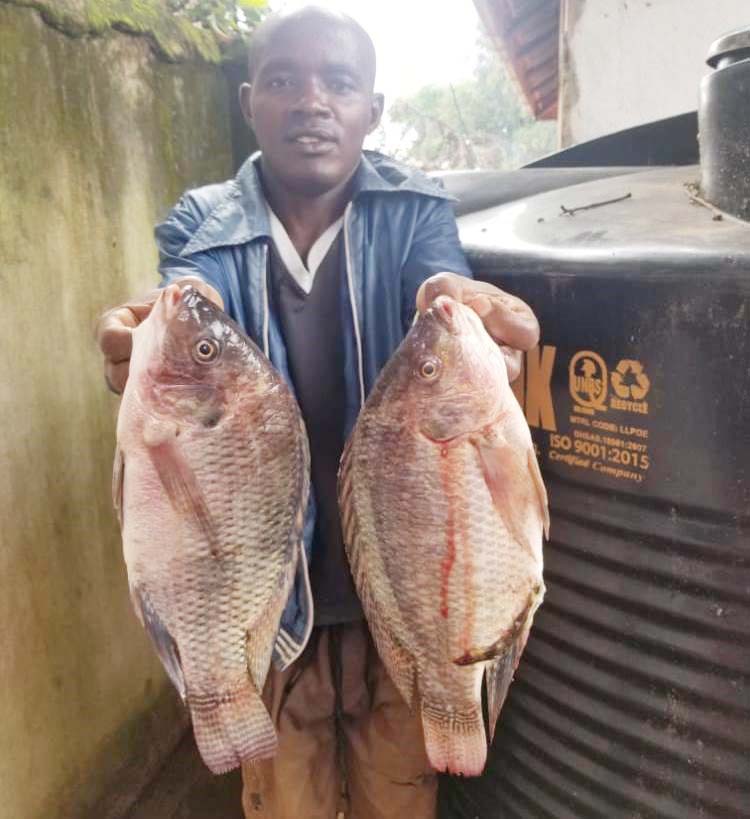
Feeding
Fish eat according to their body weight and size. To reach its maturity, each fish requires about 1.5 kilograms of feed.
For those buying commercial feeds, 1 kilogram is costing about Shs 4000.
“We have come to discover that fish are fed by response. This means that as long as they are still responding by jumping up to catch the food, we keep throwing in more; we only stop when they stop responding,” Agaba says.
Feeding is done about 4-5 times a daywhen young, so give them as much feed as they can eat.
Mature ones normally eat once a day. Most fish can be fed on maize bran or feed made out of fish bones, banana peels and leaves of green vegetables such as cabbages and dodo.
Common breeds
The most common varieties reared in Uganda are; catfish (locally known as emale) and tilapia (locally known as ngege).
Most fish farmers in Uganda prefer rearing catfish because it is easy to feed since it accepts a wide range of foods.
It easily adapts to various kinds of waters and environments. It also grows fast. This kind mature in 6 months and by then it weighs 1 kilogram of fillet.
Each kilogram costs between Shs 15,000 and 18,500, depending on its size, your location and market forces.
Tilapia is the second best reared fish. However, this requires a lot of oxygen.
This is why some farmers construct their ponds next to a water body such as a stream or a swamp in order to tap into the natural environment of running fresh water that is highly oxidized.
















